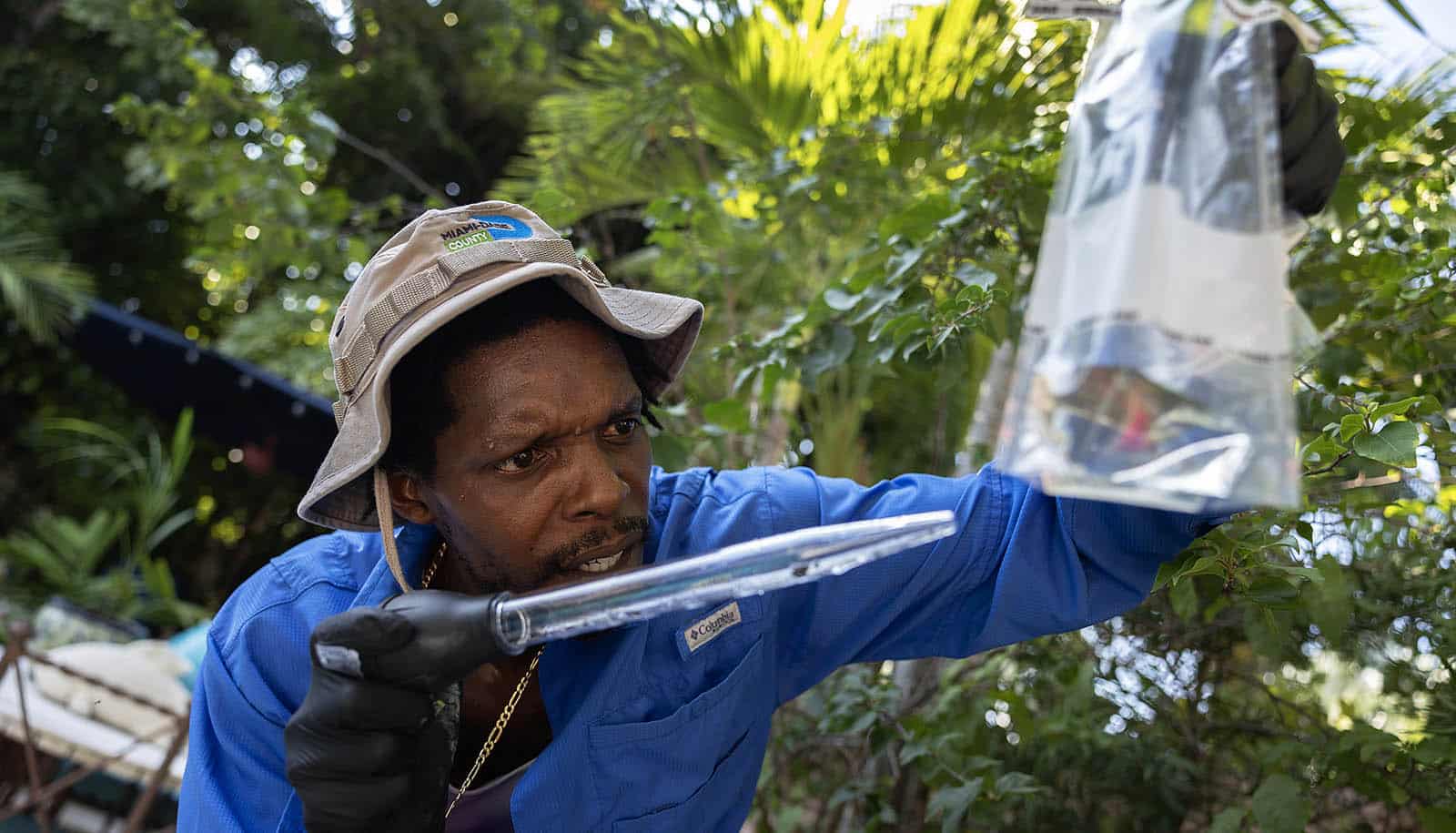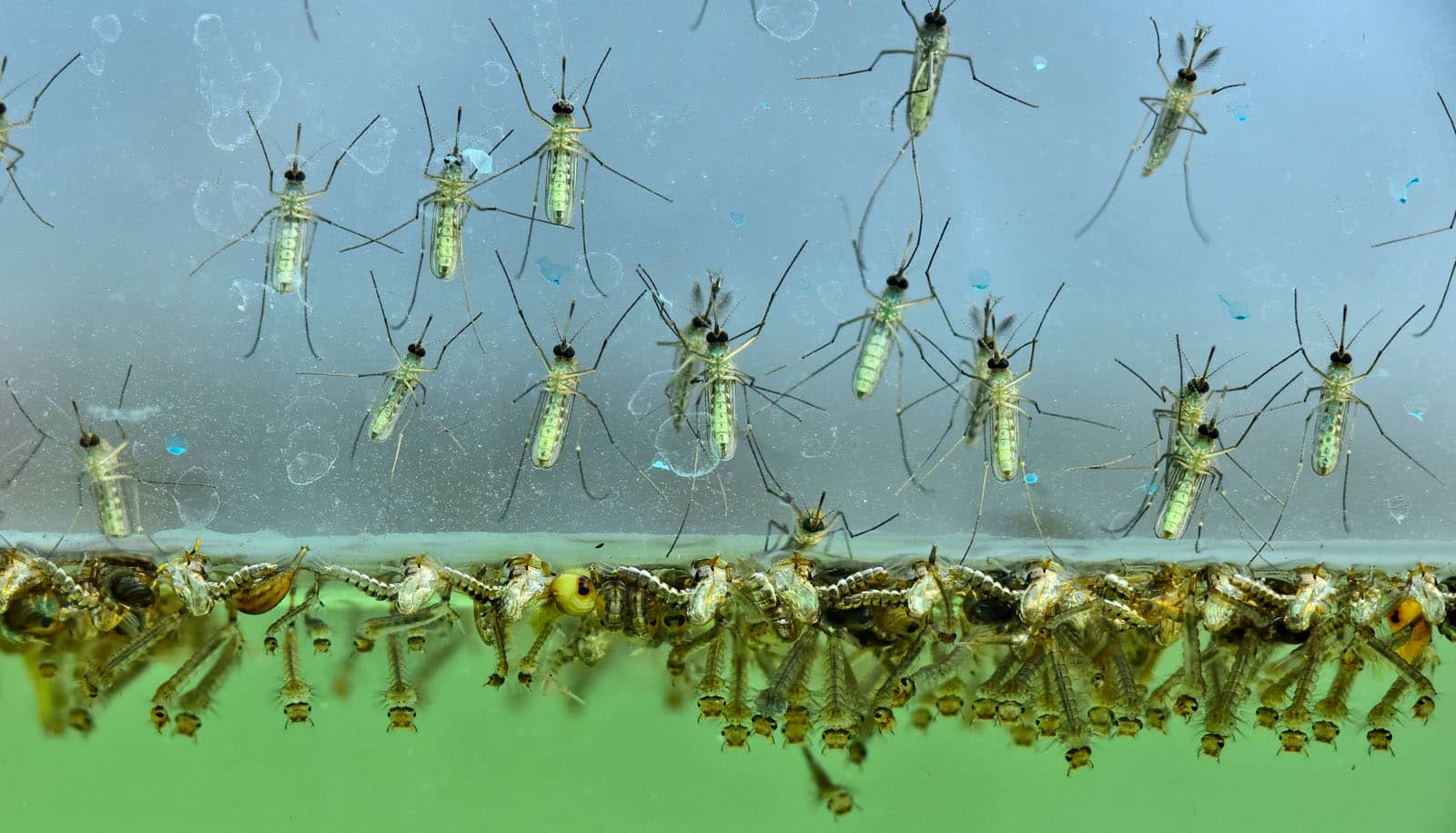For the first time since 2003, local transmission of malaria has been found in two states, with six cases in Florida and one in Texas.
When the Centers for Disease Control and Prevention (CDC) started operations in 1946, it had an urgent mission: prevent malaria from spreading across the United States. Back then, the southern United States was a hot spot for malaria, a potentially deadly infection caused by a parasite spread by Anopheles mosquitoes. The agency started spraying insecticide, waging an all-out war on the insects.
Their efforts worked. By 1951, the disease was declared eliminated from all states. But this once-endemic disease isn’t completely out of sight in the United States. In addition to the new cases, over 1,000 cases are also diagnosed each year in people traveling from countries where malaria spreads.
David Hamer, a professor of global health at Boston University School of Public Health and a core faculty at the Center for Emerging Infectious Diseases Policy & Research, specializes in vector-borne infectious diseases, including malaria. Hamer also holds an appointment in infectious diseases at the Boston University Chobanian & Avedisian School of Medicine.
Malaria affects about half of the world’s population, with the highest numbers in sub-Saharan Africa. Hamer says that although there are very effective treatments, symptoms can range from mild to life-threatening, and children under five years old and pregnant people particularly are at high risk.
Here Hamer talks about how malaria likely started to spread in Florida and Texas, protective measures against mosquitoes, and his biggest worries about mosquito-borne diseases, including how climate change is making them more of a threat:
What do we know so far about the cases of malaria in Florida and Texas?
This was most likely started with a traveler or recent immigrant coming into the country that was infected with malaria. If it was somebody from an endemic area, they could have had an infection that was very mild or even asymptomatic. To back up a bit, there are four major types of malaria that infect humans. The really bad one is called Plasmodium falciparum, and another prevalent one—the type seen in Florida and Texas recently—is Plasmodium vivax. That one can make people pretty sick and can rarely cause severe disease, but it tends to be not as bad. All six people in Florida have been diagnosed and responded well to treatment. The same is true for the one in Texas. I don’t know any details about these people other than they had not traveled recently, so they had no risk factors for having been in a malaria endemic area outside of the United States. But, clearly, someone came in and had the right phase of the malaria parasite in their blood, mosquitoes fed on them, then [the] mosquito can take a blood meal from another human and transmit malaria to them. The other possibility is that somebody from an endemic area wasn’t treated fully, and had a relapse.
I keep seeing that the United States has about 2,000 cases of malaria every year. Where do those 2,000 cases come from?
It’s travelers and immigrants. Mostly, the cases are what we call VFR travelers, people visiting friends and relatives. Those are people that grew up in an area and they’re going back to visit and either don’t think about the need to take malaria prophylaxis to prevent malaria during travel, or feel they don’t need to worry about it. I wrote a paper a couple years ago that showed that VFR travelers are the number one group that acquire malaria during international travel.
Anopheles, the species that can transmit malaria, are found in Florida all the way up to Massachusetts. Officials in Florida are now doing an enhanced [insecticide] spraying in Sarasota. So, we have the right mosquitoes, we’ve had them for hundreds of years in the United States. But if you eliminate all human infections with malaria, even with the right mosquitoes, you can’t have malaria transmission.
I only learned recently that malaria was endemic to the United States before the 1950s. How have we managed to stop the spread of malaria and keep it eradicated all this time?
In the United States, there is a combination of factors. An important one is simply having screens on windows, because the malaria-carrying mosquitoes tend to bite at dusk and during the night. There have also been various efforts to control mosquito populations that involve spraying insecticides, but there’s potential for environmental toxicity, so widespread spraying isn’t really done. The most important measure is having good treatments. If you eliminate the reservoir of human infections, it doesn’t matter as much what you do with the mosquitoes.
What are malaria treatments like?
For most forms of malaria, or at least for Plasmodium falciparum malaria, the more severe type, we use a combination of two drugs taken over the course of three days. It’s very effective and kills the parasites very quickly, so, within 24 hours, people feel better. For Plasmodium vivax malaria, you can use the same combination of drugs, or an older drug called chloroquine, which is not as well tolerated, but works. The vivax malaria has a special characteristic—and this could possibly be how the recent outbreak arose. If you treat it with chloroquine, but don’t follow up with a second drug called Primaquine, then the parasite can hide out in the liver and cause a relapse a few weeks, months, or even a year later. When it comes back, that person may be asymptomatic or become sick, and become infectious to mosquitoes, so the cycle starts over again.
What are efforts to treat and eradicate malaria like in countries where there are high rates of the disease?
In endemic areas, there’s anti-vector measures, including the use of insecticide-treated bed nets and applying pesticides on the walls of dwellings in urban and semi-urban areas, [where] once it dries, it’s safe for human contact. The biggest effort is really improving access to effective treatment, like artemisinin-based combination therapy, and trying to make sure people can get diagnosed and treated with effective drugs early. The malaria vaccine will also provide some additional protection, and it’s going to help reduce rates in high-risk populations.
What have the trends been since the vaccine was approved in 2021? Has it been available to people enough or made any sort of measurable difference?
That’s a good question. There are a handful of countries, like Ghana and Malawi, that have scaled up the vaccine for use in children. There’s more than one vaccine now, but the main one is called RTS,S. I read recently that several other countries are starting to adopt that. It’s effective, but not great. For children, it gives about 50% protection against symptomatic, clinical malaria, and about 70% protection against severe disease, which is important. It’s an additional tool for malaria control.
How worried are you about more outbreaks of malaria in the United States?
I’m not very worried. This shows us the potential for malaria to occur here. I think our ability to quickly control an outbreak from malaria is easier than an outbreak of something like dengue or chikungunya, which also spread from mosquitoes.
So, should we be more concerned about dengue and chikungunya?
I’d say dengue and chikungunya are the big vector-borne illnesses to worry about. We have a lot of vectors capable of transmitting these viruses, especially in the Southeastern, South Central, and Southwestern United States. Europe, especially the Mediterranean Basin, has the right mosquitoes. So, all it takes is somebody coming in with dengue, and you can have a local outbreak. Florida has intermittent dengue, and there was a large outbreak of dengue in Cuba last year that contributed to that. Texas has a similar problem with a lot of transmission right around the border with Mexico. There’s some evidence that it’s increased around 400% in the last 15 years. So, I think there’s a much greater risk of those two diseases spreading; they’re a little bit harder to diagnose, there’s no specific treatment, and there’s lots of mosquitoes that can transmit them. A recent paper we published highlighted that travelers can get severe disease, and we showed the array of complications.
Is there a higher risk of mosquito-borne illnesses in the United States because of climate change?
Absolutely. We’re going to have more heat and that’s going to facilitate transmission of certain kinds of mosquito-borne diseases. The warmer temperature allows mosquitoes to survive better, but it also changes how quickly either the malaria parasite or the viruses like dengue can mature in the mosquito and be transmissible. And weather patterns are a factor—if there’s a lot more rain and more standing water, then there’ll be more breeding sites for the mosquitoes.
That’s scary.
Yep. I think climate change is definitely going to increase our risk of vector-borne disease in the next decade and beyond. People should remember regular anti-mosquito measures, like an effective insect repellent, such as DEET or picaridin, which are different chemicals that are safe. They really reduce the risk of mosquito bites. In the Northeast, we have other diseases like West Nile virus, occasionally Eastern equine encephalitis, that place people at risk during the summer.
Source: Boston University



